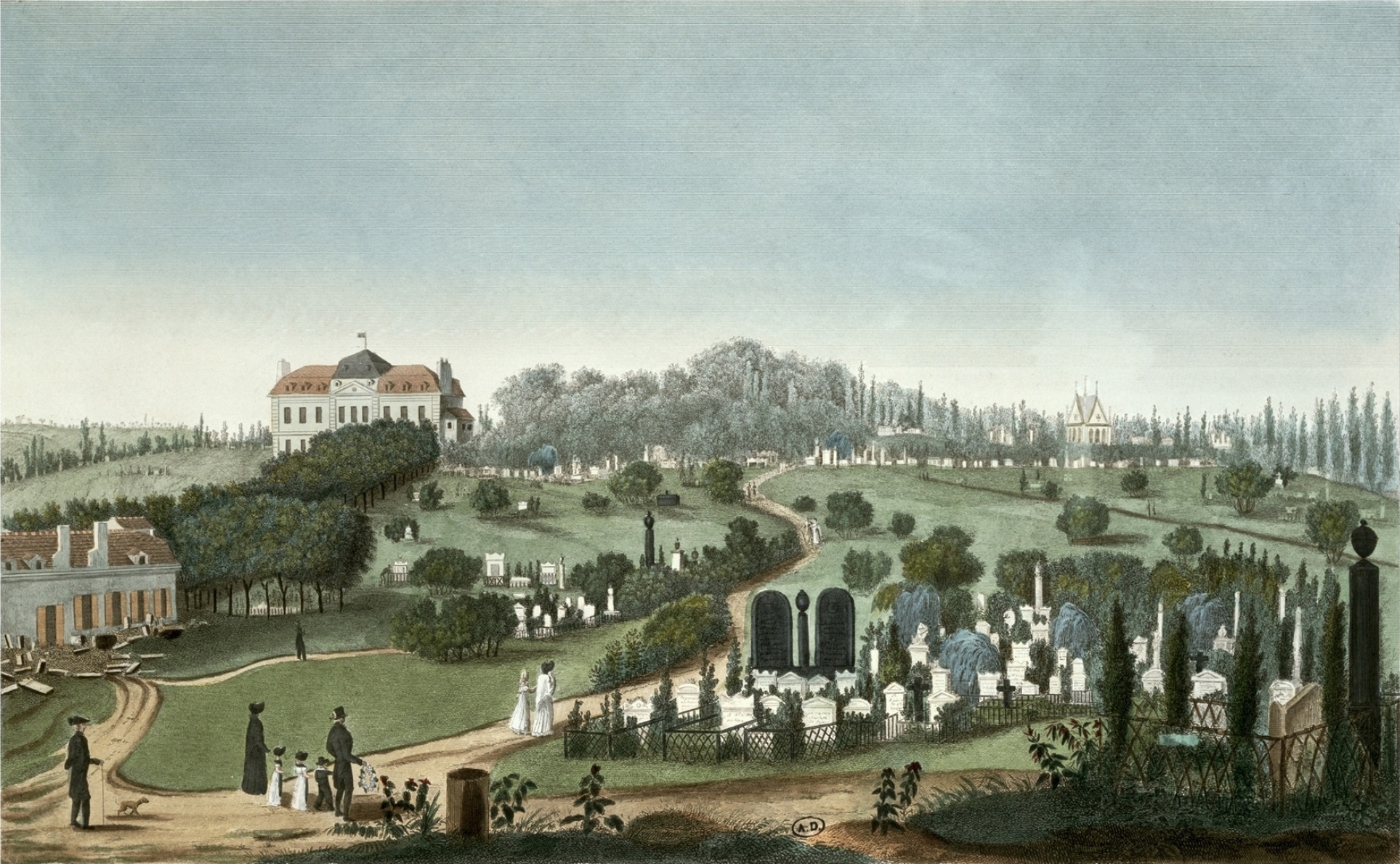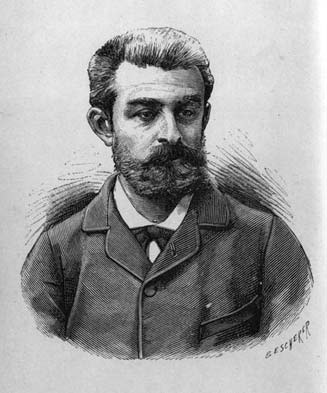|
Auguste De Villiers De L'Isle-Adam
Jean-Marie-Mathias-Philippe-Auguste, comte de Villiers de l'Isle-Adam (7 November 1838 – 19 August 1889) was a French symbolist writer. His family called him Mathias while his friends called him Villiers; he would also use the name Auguste when publishing some of his books. Life Villiers de l'Isle-Adam was born in Saint-Brieuc, Brittany, to a distinguished aristocratic family. His parents, Marquis Joseph-Toussaint and Marie-Francoise (née Le Nepvou de Carfort) were not financially secure and were supported by Marie's aunt, Mademoiselle de Kerinou. In attempt to gain wealth, Villiers de l'Isle-Adam's father began an obsessive search for the lost treasure of the Knights of Malta, formerly known as the Knights Hospitaller, of which order Philippe Villiers de L'Isle-Adam, a family ancestor, was the 16th-century Grand Master. The treasure had reputedly been buried near Quintin during the French Revolution. Consequently, Marquis Joseph-Toussaint spent large sums of money buying ... [...More Info...] [...Related Items...] OR: [Wikipedia] [Google] [Baidu] |
Saint-Brieuc
Saint-Brieuc (, Breton language, Breton: ''Sant-Brieg'' , Gallo language, Gallo: ''Saent-Berioec'') is a city in the Côtes-d'Armor Departments of France, department in Brittany (administrative region), Brittany in northwestern France. History Saint-Brieuc is named after a Wales, Welsh monk, Saint Brioc, Brioc, who Christianised the region in the 5th century and established an oratory there. Évêché de Saint-Brieuc, Bro Sant-Brieg/Pays de Saint-Brieuc, one of the nine traditional bishoprics of Brittany, which were used as administrative areas before the French Revolution, was named after Saint-Brieuc. It also dates from the Middle Ages when the ‘pays de Saint Brieuc’, or Penteur, was established by Duke Arthur II of Brittany as one of his eight ‘battles’ or administrative regions. Geography The town is located by the English Channel, on the Bay of Saint-Brieuc. Two rivers flow through Saint-Brieuc: the Goued/Gouët and the Gouedig/Gouédic. Other towns of notable siz ... [...More Info...] [...Related Items...] OR: [Wikipedia] [Google] [Baidu] |
Stéphane Mallarmé
Stéphane Mallarmé ( , ; ; 18 March 1842 – 9 September 1898), pen name of Étienne Mallarmé, was a French poet and critic. He was a major French Symbolist poet, and his work anticipated and inspired several revolutionary artistic schools of the early 20th century, such as Cubism, Futurism, Dadaism, and Surrealism. Biography Mallarmé was born in Paris. He was a boarder at the '' Pensionnat des Frères des écoles chrétiennes à Passy'' between 6 or 9 October 1852 and March 1855. He worked as an English teacher and spent much of his life in relative poverty but was famed for his '' salons'', occasional gatherings of intellectuals at his house on the rue de Rome for discussions of poetry, art and philosophy. The group became known as ''les Mardistes,'' because they met on Tuesdays (in French, ''mardi''), and through it Mallarmé exerted considerable influence on the work of a generation of writers. For many years, those sessions, where Mallarmé held court as judge, jester ... [...More Info...] [...Related Items...] OR: [Wikipedia] [Google] [Baidu] |
Android (robot)
An android is a humanoid robot or other artificial being, often made from a flesh-like material. Historically, androids existed only in the domain of science fiction and were frequently seen in film and television, but advances in robotics, robot technology have allowed the design of functional and realistic humanoid robots. Terminology The ''Oxford English Dictionary'' traces the earliest use (as "Androides") to Ephraim Chambers' 1728 ''Cyclopaedia, or an Universal Dictionary of Arts and Sciences, Cyclopaedia,'' in reference to an automaton that St. Albertus Magnus allegedly created. By the late 1700s, "androides", elaborate mechanical devices resembling humans performing human activities, were displayed in exhibit halls. The term "android" appears in US patents as early as 1863 in reference to miniature human-like toy automatons. The term ''android'' was used in a more modern sense by the French author Auguste Villiers de l'Isle-Adam in his work ''The Future Eve, Tomorrow's E ... [...More Info...] [...Related Items...] OR: [Wikipedia] [Google] [Baidu] |
Jack Sullivan (literary Scholar)
Jack Sullivan (born November 26, 1946) is an American literary scholar, professor, essayist, author, editor, musicologist, concert annotator, and short story writer. He is a scholar of the horror genre, Alfred Hitchcock, and the impact of American culture on European music. Biography Born November 26, 1946, Jack Sullivan obtained a B.A. from Furman University, and his M.A., M. Phil., and Ph.D., from Columbia University, where he studied under Jacques Barzun. A former English professor at NYU and Columbia, Sullivan is currently serving as the Chair of the English Department at Rider University, in Lawerenceville, New Jersey. His literary and music essays and reviews have appeared in ''The New York Times Book Review'', '' The Washington Post Book World'', ''The New Republic'', '' Saturday Review'', ''USA Today'', and ''Harper's Magazine''. His short fiction was published in ''The Kelsey Review'' and ''New Terrors'' (edited by Ramsey Campbell). He and his wife, Robin, have two ... [...More Info...] [...Related Items...] OR: [Wikipedia] [Google] [Baidu] |
Conte Cruel
The conte cruel is, as ''The A to Z of Fantasy Literature'' by Brian Stableford states, a "short-story genre that takes its name from an 1883 collection by Villiers de l'Isle-Adam", although previous examples had been provided by such writers as Edgar Allan Poe. Some critics use the label to refer only to non-supernatural horror stories, especially those that have nasty climactic twists, but it is applicable to any story whose conclusion exploits the cruel aspects of the 'irony of fate.' The collection from which the short-story genre of the conte cruel takes its name is ''Contes cruels'' (1883, tr. ''Sardonic Tales'', 1927) by Villiers de l'Isle-Adam. Also taking its name from this collection is '' Contes cruels'' (''Cruel Tales''), a two-volume set of about 150 tales and short stories by the 19th-century French writer Octave Mirbeau, collected and edited by Pierre Michel and Jean-François Nivet and published in two volumes in 1990 by Librairie Séguier. Some noted writers in th ... [...More Info...] [...Related Items...] OR: [Wikipedia] [Google] [Baidu] |
Horror Fiction
Horror is a genre of speculative fiction that is intended to disturb, frighten, or scare an audience. Horror is often divided into the sub-genres of psychological horror and supernatural horror. Literary historian J. A. Cuddon, in 1984, defined the horror story as "a piece of fiction in prose of variable length... which shocks, or even frightens the reader, or perhaps induces a feeling of repulsion or loathing". Horror intends to create an eerie and frightening atmosphere for the reader. Often the central menace of a work of horror fiction can be interpreted as a metaphor for larger fears of a society. History Before 1000 The horror genre has ancient origins, with roots in folklore and religious traditions focusing on death, the afterlife, evil, the demonic, and the principle of the thing embodied in the person. These manifested in stories of beings such as demons, witches, vampires, werewolves, and ghosts. Some early European horror-fiction were the Ancient Greeks and Ancie ... [...More Info...] [...Related Items...] OR: [Wikipedia] [Google] [Baidu] |
Axël
''Axël'' is a drama by French writer Auguste Villiers de l'Isle-Adam, published in 1890. It was influenced by his participation in the Paris Commune, the Gnostic philosophy of Hegel as well as the works of Goethe and Victor Hugo. It begins in an occult castle. The Byronic hero Axël meets a Germanic princess. After an initial conflict they fall in love. They speak of the amazing journeys they plan to have. But they realize that life will never measure up to their dreams. They then commit suicide. History ''Axël'' was the work Villiers considered his masterpiece, although critical opinion has often been reluctant to agree with him, placing far higher value on his fiction. Villiers began work on the piece around 1869 and had still not put the finishing touches to it when he died. It was first published posthumously in 1890. The play is heavily influenced by the Romantic theatre of Victor Hugo, as well as Goethe's ''Faust'' and the music dramas of Richard Wagner. The last time it w ... [...More Info...] [...Related Items...] OR: [Wikipedia] [Google] [Baidu] |
Frédéric Brou
Frédéric Brou (11 December 1862 - 15 May 1925) was a self-taught French painter and sculptor. Life Born in Mauritius, he sculpted and exhibited in Boutteville from 1887 onwards. There he received advice from Antonin Larroux and Georges Lemaire (engraver), Georges Lemaire. He exhibited the plaster modello for his sculpture ''Eve'' at the 1897 Salon (Paris), 'salon des artistes français', exhibiting the finished work in marble at the same venue two years later, where it faced off against Rodin's Eve (Rodin), work on the same subject. The French state commissioned a bust of Jules Ferry from him in 1899 and he regularly exhibited at the Société des artistes français. He died in Pleumeur-Bodou. Selected works * Fanjeaux : ''Monument to Hugues Destrem'' * Paris : ** musée Carnavalet : ''Monument to Villiers de l'Isle Adam'', also known as ''Glory Pulling Auguste de Villiers de l'Isle Adam From His Eternal Sleep'', 1906, plaster maquette for the poet's tomb, never realised Léon B ... [...More Info...] [...Related Items...] OR: [Wikipedia] [Google] [Baidu] |
Glory Pulling Auguste De Villiers De L'Isle Adam From His Eternal Sleep
''Glory Pulling Auguste de Villiers de l'Isle Adam From His Eternal Sleep'' is a 1906 maquette by Frédéric Brou for a tomb monument to the writer Auguste de Villiers de L'Isle-Adam. History Burial and committee The writer died on 18 August 1889 and was buried three days later in the cimetière des Batignolles. « Échos », ''Le Figaro'', 22 September 1889, p. 1 On 15 October 1895, his remains were moved to the 97th division of the cimetière du Père-Lachaise, where a new tomb was inaugurated on 15 December the same year. « Faits divers », ''Le Temps'', 16 December 1895, p. 3 It consisted of a single Vire granite slab, on which was engraved his coat of arms and an inscription which translates as "A. de VILLIERS de l'ISLE ADAM, born at St. Brieuc on 7 November 1838, died in Paris on 18 August 1889". File:Père-Lachaise - Division 79 - Villiers de L'Isle-Adam 01.jpg File:Père-Lachaise - Division 79 - Villiers de L'Isle-Adam 02.jpg A committee was formed to plan a larger t ... [...More Info...] [...Related Items...] OR: [Wikipedia] [Google] [Baidu] |
Père Lachaise Cemetery
Père Lachaise Cemetery (, , formerly , ) is the largest cemetery in Paris, France, at . With more than 3.5 million visitors annually, it is the most visited necropolis in the world. Buried at Père Lachaise are many famous figures in the arts, including Miguel Ángel Asturias, Honoré de Balzac, Sarah Bernhardt, Georges Bizet, Frédéric Chopin, Colette, George Enescu, Max Ernst, Olivia de Havilland, Marcel Marceau, Georges Méliès, Amedeo Modigliani, Molière, Édith Piaf, Camille Pissarro, Marcel Proust, Gertrude Stein, Oscar Wilde, Richard Wright (author), Richard Wright, Sadegh Hedayat, Jim Morrison, and Michel Petrucciani. Many famous philosophers, scientists, and historical figures are buried there as well, including Peter Abelard, Pierre Bourdieu, Jean-François Champollion, Auguste Comte, Georges Cuvier, Joseph Fourier, Manuel Godoy, Georges-Eugène Haussmann, Jean-François Lyotard, Nestor Makhno, Maurice Merleau-Ponty, Jean Moulin, Henri de Saint-Simon, Jean-Bap ... [...More Info...] [...Related Items...] OR: [Wikipedia] [Google] [Baidu] |
À Rebours
(; translated ''Against Nature'' or ''Against the Grain'') is an 1884 novel by the French writer Joris-Karl Huysmans. The narrative centers on a single character: Jean des Esseintes, an eccentric, reclusive, ailing aesthete. The last scion of an aristocratic family, Des Esseintes loathes nineteenth-century bourgeois society and tries to retreat into an ideal artistic world of his own creation. The narrative is almost entirely a catalogue of the neurotic Des Esseintes's aesthetic tastes, musings on literature, painting, and religion, and hyperaesthetic sensory experiences. contains many themes that became associated with the Symbolist aesthetic. In doing so, it broke from Naturalism and became the ultimate example of " Decadent" literature, inspiring works such as Oscar Wilde's '' The Picture of Dorian Gray'' (1890). In his preface for the 1903 publication of the novel, Huysmans wrote that he had the idea to portray a man "soaring upwards into dream, seeking refuge in il ... [...More Info...] [...Related Items...] OR: [Wikipedia] [Google] [Baidu] |
Joris-Karl Huysmans
Charles-Marie-Georges Huysmans (, ; 5 February 1848 – 12 May 1907) was a French novelist and art critic who published his works as Joris-Karl Huysmans (, variably abbreviated as J. K. or J.-K.). He is most famous for the novel (1884, published in English as ''Against the Grain'' and as ''Against Nature''). He supported himself by way of a 30-year career in the French civil service. Huysmans's work is considered remarkable for its idiosyncratic use of the French language, large vocabulary, descriptions, satirical wit and far-ranging erudition. First considered part of Naturalism, he became associated with the Decadent movement with his publication of ''À rebours''. His work expressed his deep pessimism, which had led him to the philosophy of Arthur Schopenhauer. In later years, his novels reflected his study of Catholicism, religious conversion, and becoming an oblate. He discussed the iconography of Christian architecture at length in '' La cathédrale'' (1898), set a ... [...More Info...] [...Related Items...] OR: [Wikipedia] [Google] [Baidu] |






